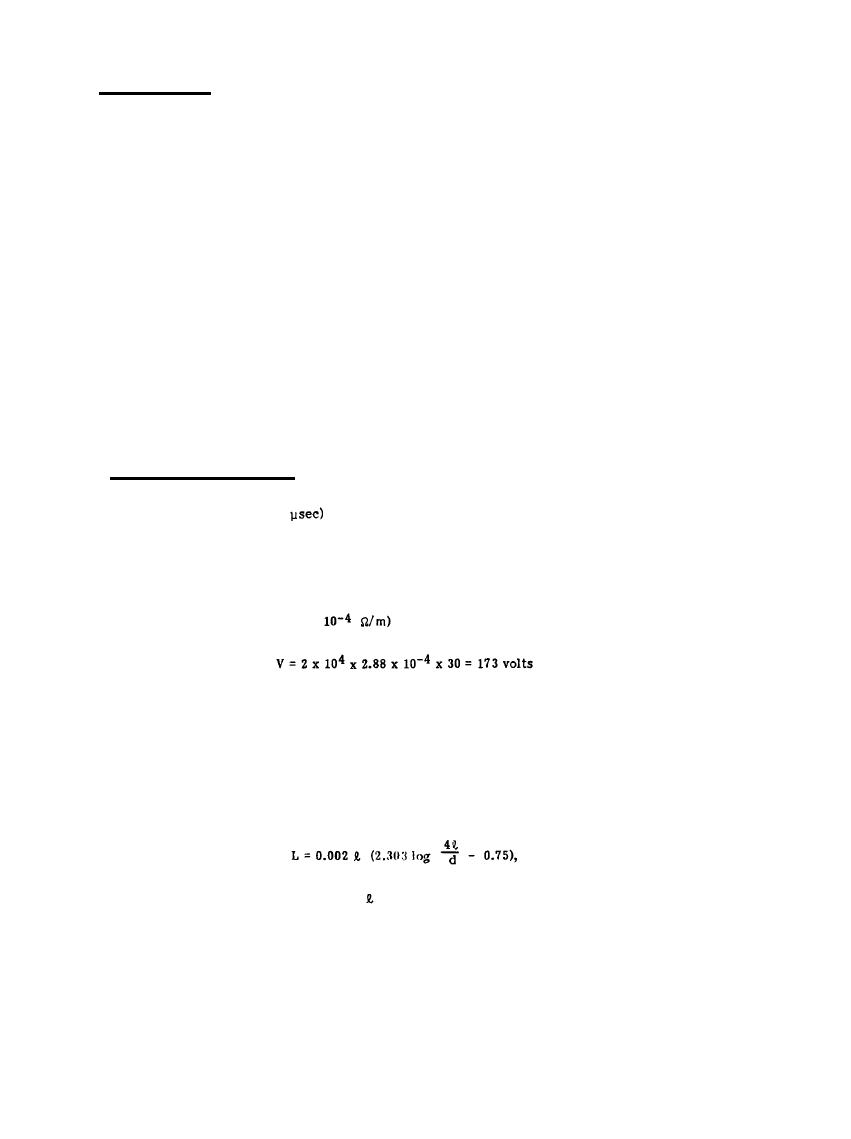

Custom Search
|
|

|
||
 MIL-HDBK-419A
3.6.3 Electrical Effects.
Lightning discharges to or near the buildings and structures frequently cause damage to electrical and,
electronic equipment. Melting or burning of conductors occurs at the point of interception of the stroke. The
voltages developed by the fast risetime, high amplitude current pulse are frequently high enough to break down
insulation, pose personnel hazards, and cause component and device failure. These voltages are produced by:
IZ (current x impedance) drop resulting from the lightning pulse traveling down power lines or signal
a.
lines, through structural members, along down conductors or overhead ground wires or through the resistance of
the earth connection;
b.
Magnetic induction; and
c.
Capacitive coupling.
Lightning surges in power, signal, and control circuits are generally the result of some combination of these
three components.
3.6.3.1 Conductor Impedance Effects.
Because of the fast risetime (1 to 2
and high amplitude (10 to 20 kA) characteristics of the current pulse
produced by the lightning discharge, the inductance and resistance of even relatively short conductors causes
extremely high voltages to be developed on the conductor. The voltages frequently are high enough to exceed
the breakdown potential of air or other insulation materials and cause flashover to other conductors or
breakdown of insulation. The resistive IR drop generated by 20 kA in a 30 meter (100 feet) run of down
conductor conforming to NFPA-78 (2.88 x
will be
(3-7)
which is not sufficient to cause flashover or to pose a serious threat to personnel.
For a down conductor length of 30 meters (100 feet), the smallest copper conductor meeting the minimum
requirements of the Lightning Protection Code or the UL Master Labeled Lightning Protection System has a
diameter of 0.894 cm (0.352 inches). Assuming that the conductor is a straight round wire, the inductance can
be determined from (see Section 5.2.2.3):
(3-8)
where L is the total inductance in microhenries,
is the length in cm, and d is the diameter in cm. A 30-meter
length of conductor will exhibit an inductance of 52.5 microhenries.
3-17
|
 
|
|
 |
||